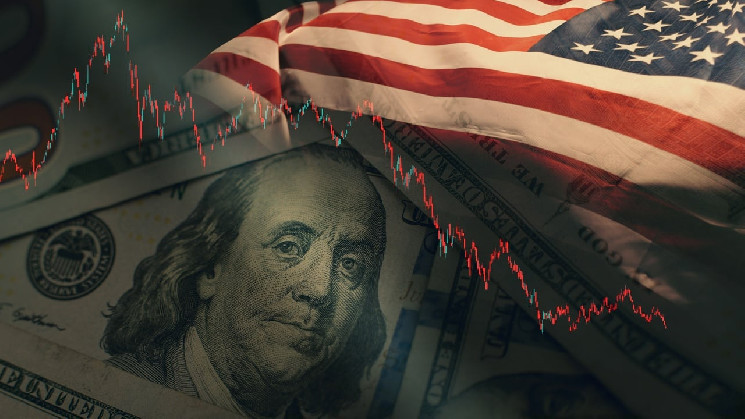6 Indicators of Economic Trouble: Is a US Recession on the Horizon?
 news.bitcoin.com 05 August 2024 02:53, UTC
news.bitcoin.com 05 August 2024 02:53, UTC At the end of the week, U.S. equities experienced a sharp decline, which reverberated through the cryptocurrency market, reducing its value from $2.4 trillion to $2.09 trillion since July 29. Recently, discussions have intensified around the likelihood of an impending U.S. recession, with a soft landing seemingly off the table. Below are six distinct indicators and reasons why this might be the case.
Sharp Decline in U.S. Markets Sparks Recession Concerns
Over the past year, some economists maintained that the U.S. had avoided a recession, and a few continue to hold this view. However, a growing number of analysts and economists are now predicting that a recession is on the horizon, with some even speculating about the possibility of a significant depression. While future outcomes are uncertain, we can examine the clear signs and reasoning behind the belief that the U.S. economy might be heading for a downturn.
Economic Activity:
There has been a consistent decline in U.S. economic activity, marked by shrinking gross domestic product (GDP), rising unemployment, and decreased business investments. The latest jobs report shows a jump in unemployment rates not seen in years, with the rate increasing by 0.2 percentage points to 4.3% in July 2024. Real GDP growth in the first quarter of 2024 was 1.4%, a notable slowdown from the 4.1% growth observed in the latter half of 2023.
Financial Calamity:
In 2023, the U.S. experienced substantial banking failures, some of the largest on record, culminating in a total of five bank collapses that year. In April 2024, Republic First Bancorp also failed. Simultaneously, the U.S. economy has been grappling with an increase in loan defaults and a decline in consumer spending, driven by economic uncertainties and rising interest rates. Furthermore, credit card debt has rapidly escalated, reaching unprecedented levels as consumers increasingly rely on credit for everyday expenses.
Yield Curve Inversion:
The U.S. bond market has been contending with a prolonged yield curve inversion, where short-term interest rates exceed long-term rates, signaling potential financial instability. This condition has persisted for over two years. Historically, such an inversion suggests that investors are pessimistic about the economy’s immediate outlook and often precedes a downturn in economic growth and lending activity.
World Conflicts:
Geopolitical conflicts have created significant challenges for the United States and the global community. These tensions have heightened uncertainty and curtailed global trade due to widespread sanctions and a strained global economy. The conflicts in Israel, Gaza, and Ukraine have exerted immense pressure on the global economy. Additionally, more than 90 countries are currently involved in conflicts beyond their borders.
Inflation and High Interest Rates:
The United States has undergone a significant inflationary period, prompting the central bank to raise interest rates in an effort to slow down the economy. Inflation has become particularly sticky, and the federal funds rate is now the highest it has been in 23 years. As a result, banks are lending less due to the combination of elevated interest rates and economic uncertainties. Moreover, banks have observed a rise in delinquencies within consumer portfolios.
Forecasts Rise:
Lastly, there are the forecasters who have been predicting an economic downturn for quite some time. Robert Kiyosaki, author of Rich Dad Poor Dad, recently stated that the stock market crash he anticipated has materialized. Others, like Peter Schiff and economist Harry Dent, have also warned of a recession or depression, with Dent even predicting that a 2024 market crash could surpass the Great Depression. Whether these predictions will prove accurate is uncertain, but these forecasters have been adamant for some time that such an event is on the horizon.
A Sobering Picture of the U.S. Economy
The convergence of these factors paints a sobering picture of the U.S. economy, where mounting challenges across various sectors point to a potential downturn. While some remain optimistic, the indicators suggest that the nation may be on the cusp of a significant economic shift. As uncertainty grows, the resilience of the economy and the measures taken to mitigate these risks will be crucial.
Looking ahead, the question remains whether the U.S. can navigate these economic challenges without slipping into a recession or more severe depression. The interplay between global conflicts, financial instability, and domestic economic pressures will likely determine the trajectory going forward.




